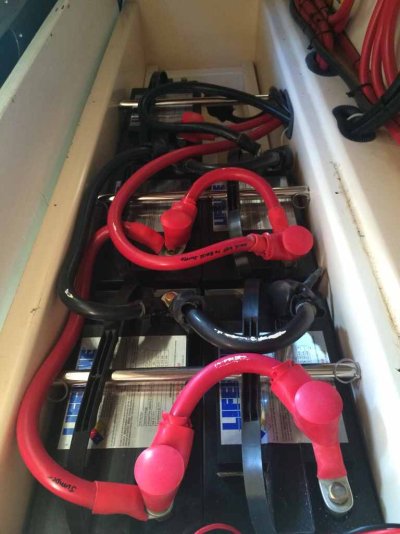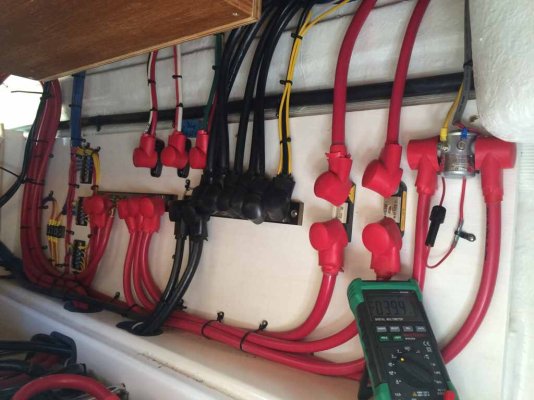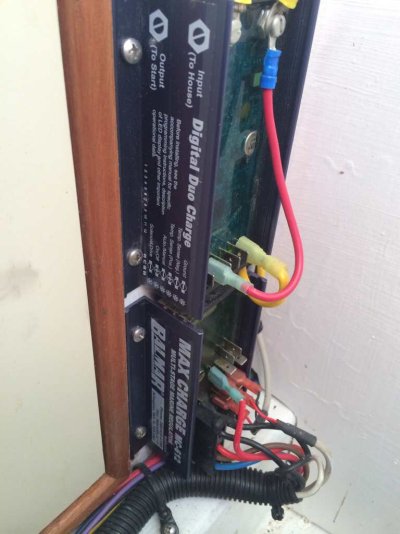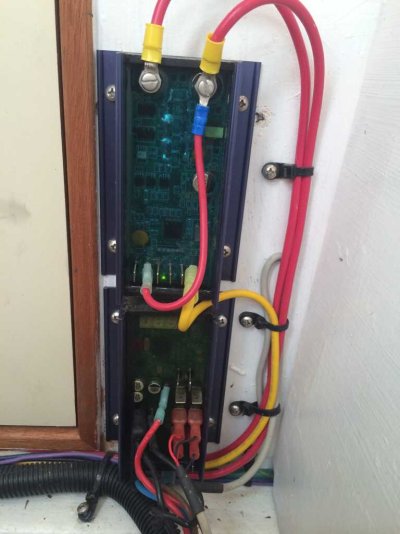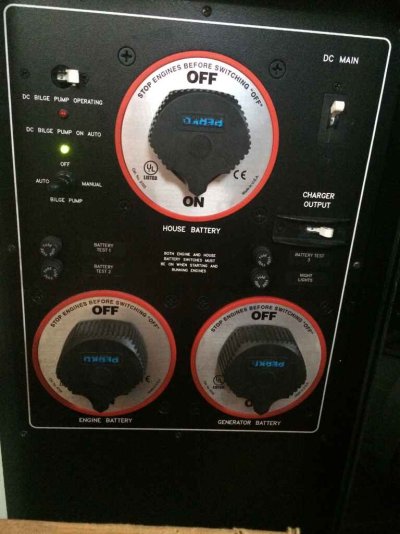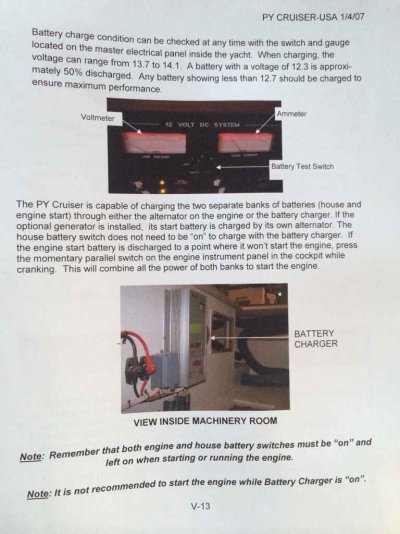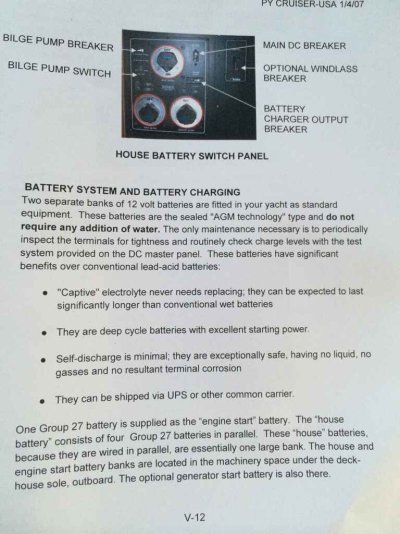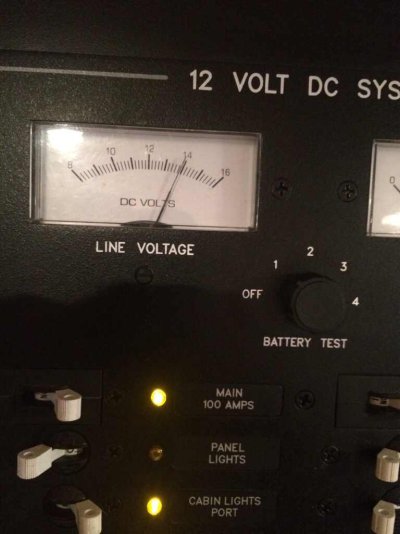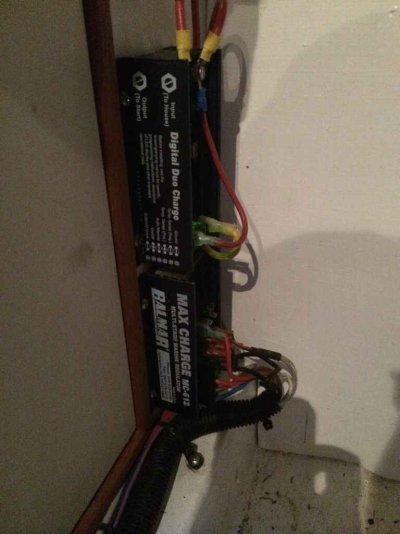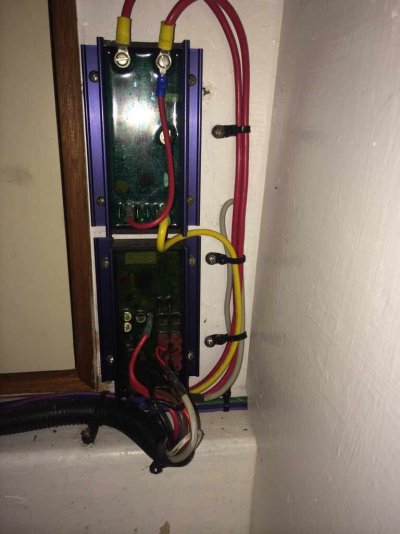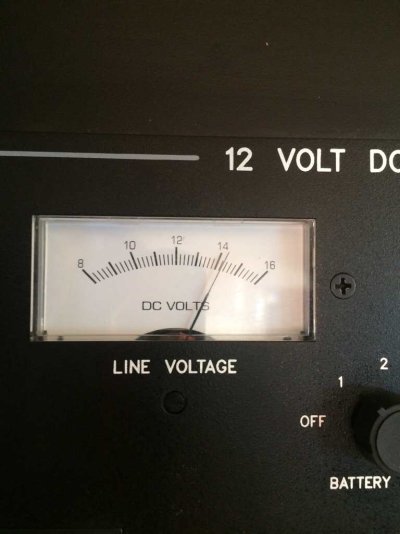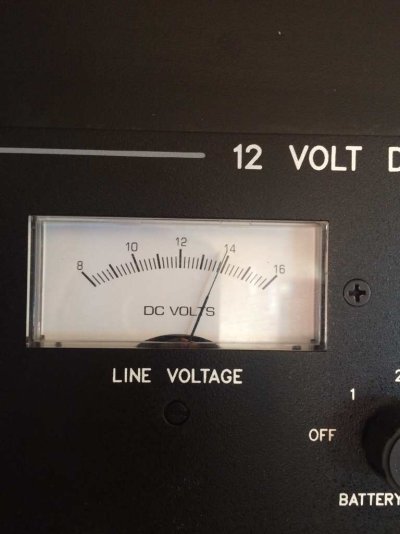cardude01
Guru
- Joined
- Nov 26, 2012
- Messages
- 5,290
- Location
- USA
- Vessel Name
- Bijou
- Vessel Make
- 2008 Island Packet PY/SP
So I'm bringing the boat over to the west coast of FL this weekend, and I noticed today when I used the thruster in a lock it sounded weak and my new Garmin plotter also turned off (I'm guessing from low voltage). The thruster does not have its own separate battery.
The battery system has 4 group 27 AGM wired parallel and then there is a separate start battery for the engine and gen. The starter also sounds weak on crank up.
How do I load test for a bad battery?
I put a multimeter on the start battery when the engine was running and it only showed 12.7 volts. Is that low? It has a Balmar 110 amp alternator and a Balmar Max Charge regulator. The house bank showed 13v when underway.

The battery system has 4 group 27 AGM wired parallel and then there is a separate start battery for the engine and gen. The starter also sounds weak on crank up.
How do I load test for a bad battery?
I put a multimeter on the start battery when the engine was running and it only showed 12.7 volts. Is that low? It has a Balmar 110 amp alternator and a Balmar Max Charge regulator. The house bank showed 13v when underway.


